(METHYLTHIO)ACETICACID
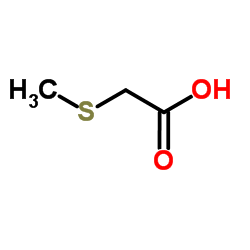
(METHYLTHIO)ACETICACID structure
|
Common Name | (METHYLTHIO)ACETICACID | ||
|---|---|---|---|---|
| CAS Number | 2444-37-3 | Molecular Weight | 106.144 | |
| Density | 1.2±0.1 g/cm3 | Boiling Point | 225.9±23.0 °C at 760 mmHg | |
| Molecular Formula | C3H6O2S | Melting Point | 13-14 °C(lit.) | |
| MSDS | Chinese USA | Flash Point | 90.4±22.6 °C | |
| Symbol |

GHS07 |
Signal Word | Warning | |
| Name | (methylthio)acetic acid |
|---|---|
| Synonym | More Synonyms |
| Density | 1.2±0.1 g/cm3 |
|---|---|
| Boiling Point | 225.9±23.0 °C at 760 mmHg |
| Melting Point | 13-14 °C(lit.) |
| Molecular Formula | C3H6O2S |
| Molecular Weight | 106.144 |
| Flash Point | 90.4±22.6 °C |
| Exact Mass | 106.008850 |
| PSA | 62.60000 |
| LogP | 0.18 |
| Vapour Pressure | 0.0±0.9 mmHg at 25°C |
| Index of Refraction | 1.501 |
Synonym: Section 2 - COMPOSITION, INFORMATION ON INGREDIENTS
Risk Phrases: 36/37/38 Section 3 - HAZARDS IDENTIFICATION EMERGENCY OVERVIEW
Irritating to eyes, respiratory system and skin. Potential Health Effects Eye: Causes eye irritation. Skin: Causes skin irritation. May be harmful if absorbed through the skin. Ingestion: May cause irritation of the digestive tract. May be harmful if swallowed. Inhalation: Causes respiratory tract irritation. May be harmful if inhaled. Chronic: Not available. Section 4 - FIRST AID MEASURES Eyes: Flush eyes with plenty of water for at least 15 minutes, occasionally lifting the upper and lower eyelids. Get medical aid. Skin: Get medical aid. Flush skin with plenty of water for at least 15 minutes while removing contaminated clothing and shoes. Ingestion: Get medical aid. Wash mouth out with water. Inhalation: Remove from exposure and move to fresh air immediately. If not breathing, give artificial respiration. If breathing is difficult, give oxygen. Get medical aid. Notes to Physician: Treat symptomatically and supportively. Section 5 - FIRE FIGHTING MEASURES General Information: As in any fire, wear a self-contained breathing apparatus in pressure-demand, MSHA/NIOSH (approved or equivalent), and full protective gear. Extinguishing Media: Use water spray, dry chemical, carbon dioxide, or chemical foam. Section 6 - ACCIDENTAL RELEASE MEASURES General Information: Use proper personal protective equipment as indicated in Section 8. Spills/Leaks: Absorb spill with inert material (e.g. vermiculite, sand or earth), then place in suitable container. Section 7 - HANDLING and STORAGE Handling: Avoid breathing dust, vapor, mist, or gas. Avoid contact with skin and eyes. Storage: Store in a cool, dry place. Store in a tightly closed container. Section 8 - EXPOSURE CONTROLS, PERSONAL PROTECTION Engineering Controls: Facilities storing or utilizing this material should be equipped with an eyewash facility and a safety shower. Use adequate ventilation to keep airborne concentrations low. Exposure Limits CAS# 2444-37-3: Personal Protective Equipment Eyes: Not available. Skin: Wear appropriate protective gloves to prevent skin exposure. Clothing: Wear appropriate protective clothing to prevent skin exposure. Respirators: Follow the OSHA respirator regulations found in 29 CFR 1910.134 or European Standard EN 149. Use a NIOSH/MSHA or European Standard EN 149 approved respirator if exposure limits are exceeded or if irritation or other symptoms are experienced. Section 9 - PHYSICAL AND CHEMICAL PROPERTIES Physical State: Liquid Color: Not available. Odor: stench pH: Not available. Vapor Pressure: Not available. Viscosity: Not available. Boiling Point: 99 - 100 deg C @4mmHg Freezing/Melting Point: 13 - 14 deg C Autoignition Temperature: Not available. Flash Point: 110 deg C ( 230.00 deg F) Explosion Limits, lower: Not available. Explosion Limits, upper: Not available. Decomposition Temperature: Solubility in water: Specific Gravity/Density: 1.219 Molecular Formula: C3H6O2S Molecular Weight: 106.14 Section 10 - STABILITY AND REACTIVITY Chemical Stability: Not available. Conditions to Avoid: Incompatible materials. Incompatibilities with Other Materials: Strong oxidizing agents. Hazardous Decomposition Products: Carbon monoxide, carbon dioxide, sulfur oxides (SOx), including sulfur oxide and sulfur dioxide. Hazardous Polymerization: Has not been reported Section 11 - TOXICOLOGICAL INFORMATION RTECS#: CAS# 2444-37-3 unlisted. LD50/LC50: Not available. Carcinogenicity: (Methylthio)acetic acid - Not listed by ACGIH, IARC, or NTP. Section 12 - ECOLOGICAL INFORMATION Section 13 - DISPOSAL CONSIDERATIONS Dispose of in a manner consistent with federal, state, and local regulations. Section 14 - TRANSPORT INFORMATION IATA Shipping Name: AVIATION REGULATED LIQUID, N.O.S.* Hazard Class: 9 UN Number: 3334 Packing Group: IMO Not regulated as a hazardous material. RID/ADR Not regulated as a hazardous material. Section 15 - REGULATORY INFORMATION European/International Regulations European Labeling in Accordance with EC Directives Hazard Symbols: XI Risk Phrases: R 36/37/38 Irritating to eyes, respiratory system and skin. Safety Phrases: S 26 In case of contact with eyes, rinse immediately with plenty of water and seek medical advice. S 37/39 Wear suitable gloves and eye/face protection. WGK (Water Danger/Protection) CAS# 2444-37-3: No information available. Canada None of the chemicals in this product are listed on the DSL/NDSL list. CAS# 2444-37-3 is not listed on Canada's Ingredient Disclosure List. US FEDERAL TSCA CAS# 2444-37-3 is not listed on the TSCA inventory. It is for research and development use only. SECTION 16 - ADDITIONAL INFORMATION N/A |
| Symbol |

GHS07 |
|---|---|
| Signal Word | Warning |
| Hazard Statements | H315-H319-H335 |
| Precautionary Statements | P261-P305 + P351 + P338 |
| Personal Protective Equipment | Eyeshields;full-face respirator (US);Gloves;multi-purpose combination respirator cartridge (US);type ABEK (EN14387) respirator filter |
| Hazard Codes | Xi |
| Risk Phrases | R36/37/38 |
| Safety Phrases | S26-S36 |
| RIDADR | UN 3334 |
| WGK Germany | 3 |
| HS Code | 2930909090 |
| Precursor 8 | |
|---|---|
| DownStream 8 | |
| HS Code | 2930909090 |
|---|---|
| Summary | 2930909090. other organo-sulphur compounds. VAT:17.0%. Tax rebate rate:13.0%. . MFN tariff:6.5%. General tariff:30.0% |
|
A stable three-enzyme creatinine biosensor. 1. Impact of structure, function and environment on PEGylated and immobilized sarcosine oxidase.
Acta Biomater. 1(2) , 173-81, (2005) The determination of creatinine levels in biological fluids is an increasingly important clinical requirement. Amperometric biosensors have been developed based on a three-enzyme system which converts... |
|
|
A formal total synthesis of (-)-cephalotaxine.
Chem. Pharm. Bull. 47(7) , 983-7, (1999) A formal total synthesis of (-)-cephalotaxine (1) has been achieved. The key step is an intramolecular aldol condensation of the diketone 9, which in turn was obtained in three steps from the azabicyc... |
|
|
Monomeric sarcosine oxidase: structure of a covalently flavinylated amine oxidizing enzyme.
Structure 7(3) , 331-45, (1999) Monomeric sarcosine oxidases (MSOXs) are among the simplest members of a recently recognized family of eukaryotic and prokaryotic enzymes that catalyze similar oxidative reactions with various seconda... |
| (Methylmercapto)acetic acid |
| 2-(Methylthio)acetic acid |
| EINECS 219-483-6 |
| MFCD00075444 |
| Acetic acid, (methylthio)- |
| methylmercaptoacetic acid |
| methyl-sulfenylacetic acid |
| acetic acid,(methylthio) |
| 2-(methylsulfanyl)acetic acid |
| (Methylthio)acetic acid |
| 2-methylsulfanylacetic acid |
| (Methylsulfanyl)acetic acid |
| QV1S1 |
| Acetic acid, 2-(methylthio)- |
| (METHYLTHIO)ACETICACID |
 CAS#:68-11-1
CAS#:68-11-1 CAS#:74-88-4
CAS#:74-88-4 CAS#:4455-13-4
CAS#:4455-13-4 CAS#:35120-10-6
CAS#:35120-10-6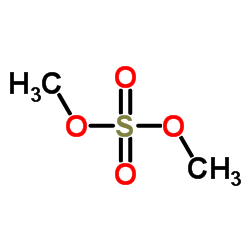 CAS#:77-78-1
CAS#:77-78-1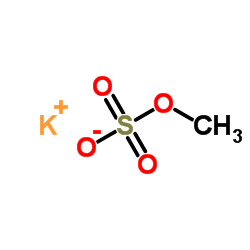 CAS#:562-54-9
CAS#:562-54-9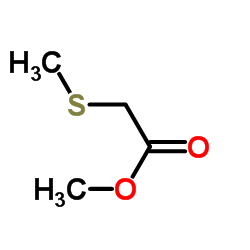 CAS#:16630-66-3
CAS#:16630-66-3 CAS#:105-39-5
CAS#:105-39-5 CAS#:58992-38-4
CAS#:58992-38-4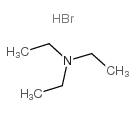 CAS#:636-70-4
CAS#:636-70-4 CAS#:298-12-4
CAS#:298-12-4![1H-Benzimidazole,2-[(methylthio)methyl]-(9CI) structure](https://image.chemsrc.com/caspic/346/36000-20-1.png) CAS#:36000-20-1
CAS#:36000-20-1 CAS#:35928-65-5
CAS#:35928-65-5 CAS#:2516-97-4
CAS#:2516-97-4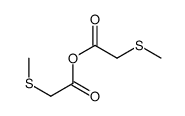 CAS#:63521-90-4
CAS#:63521-90-4